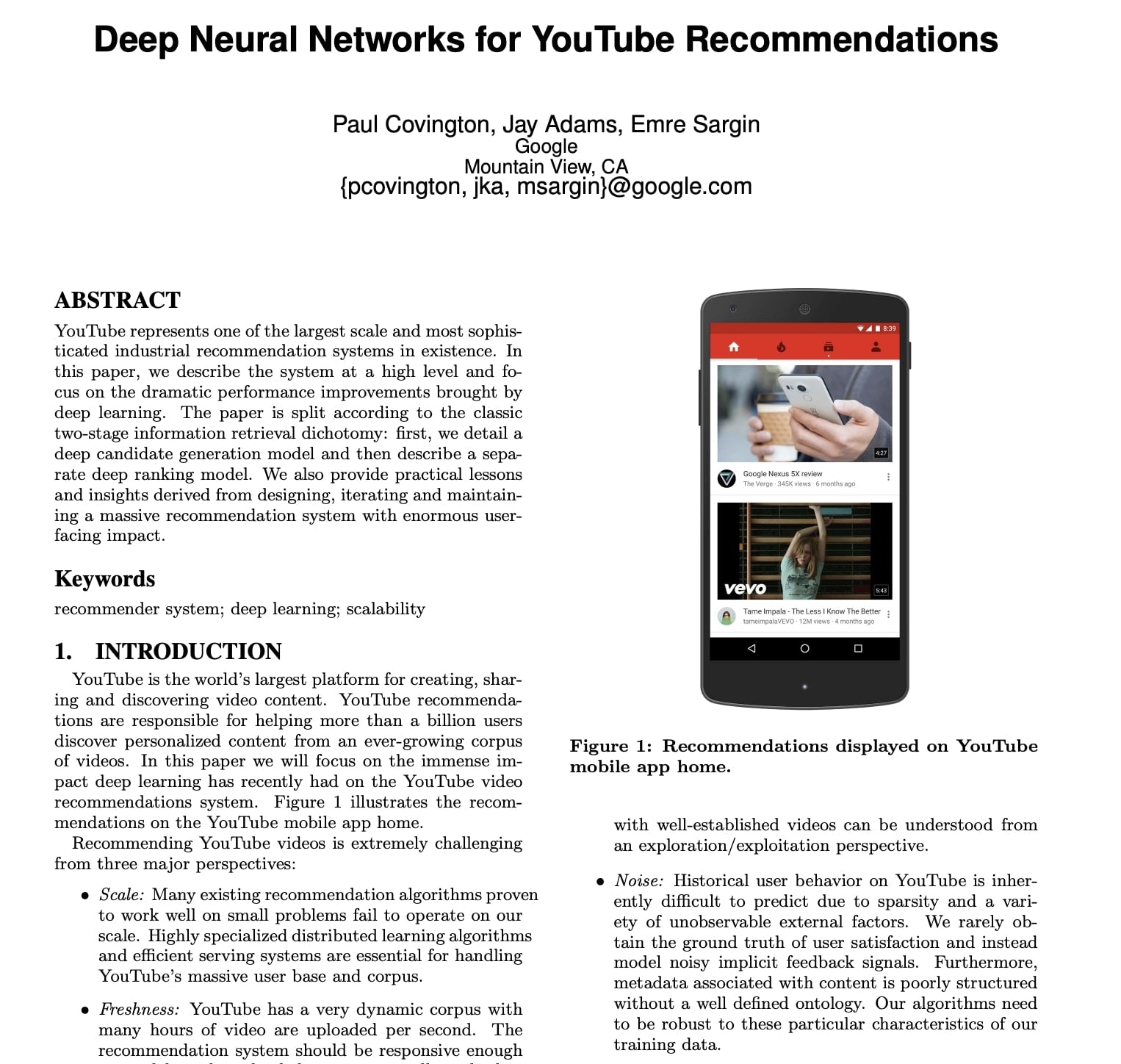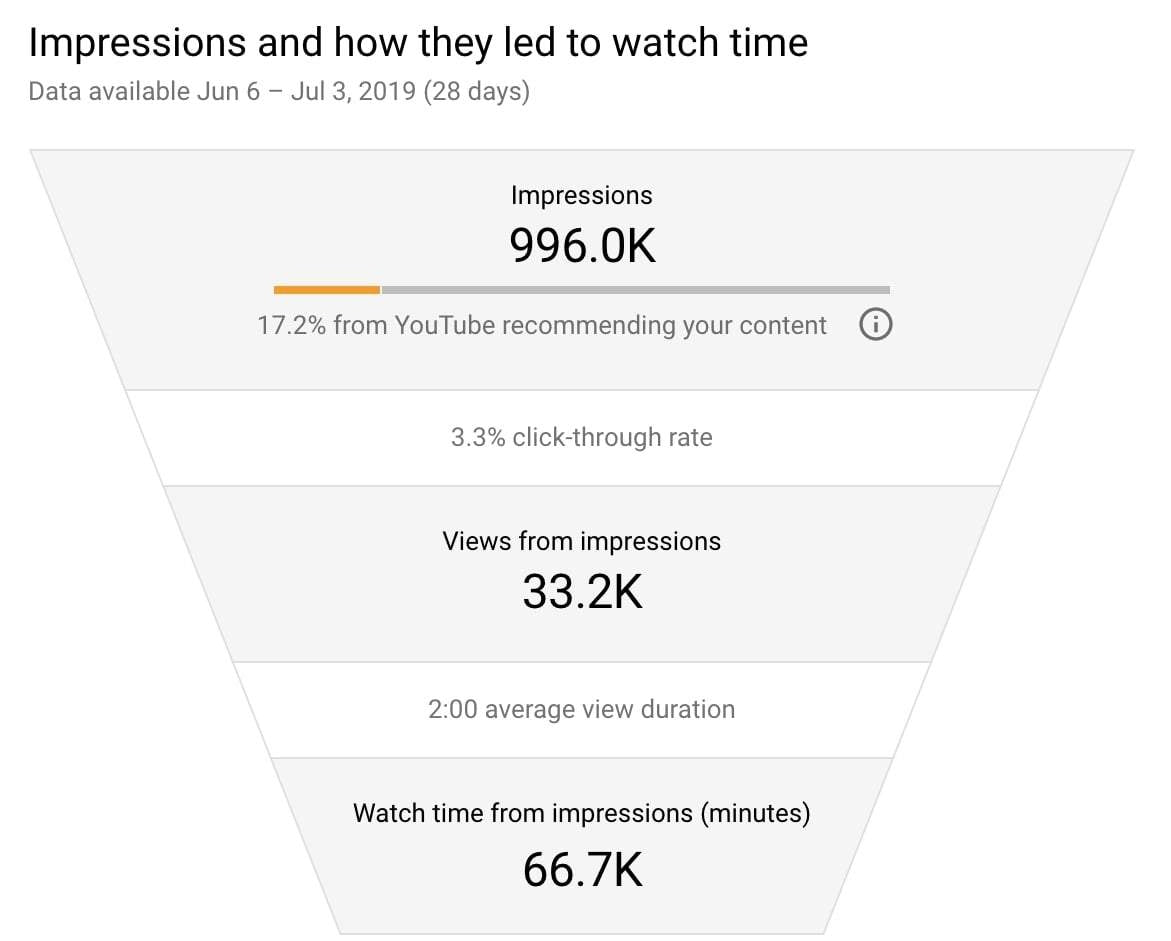Lots of video creators, whether pro YouTubers or YouTube brands regard the YouTube algorithm as a complete mystery—a higher power that rules over their view counts, completely out of their control.
They believe there is no understanding of how the YouTube algorithm works. It’s one of the platform’s most carefully guarded secrets, after all.
Except it isn’t.
In a research paper updated in 2016, a team of Google engineers showed their ideas about how videos might be surfaced through YouTube’s recommendation engine for better user experience.
While it did not get much attention at that time, it has lots of relevance to the YouTube of today since, base on YouTube’s Chief Product Officer, 70% of YouTube views now come through this recommendation engine.
Most of the discussion about getting views on YouTube concentrates on YouTube SEO, social media promotion, and gaining subscribers. While these contribute to the discovery of your videos, alone they do not unlock the lion’s share of views you stand to gain from YouTube’s recommendation engine (via YouTube’s homepage and “recommended for you” suggestions).
If you wish to get more video views in the long term, you should know a few things about how the YouTube algorithm works in 2019.
How the YouTube algorithm works

According to research paper updated by Google engineers Jay Adams, Paul Covington, and Emre Sargin, they break down the signals they utilize to rank videos for YouTube recommendations:
- Click-through rate (the likelihood of somebody clicking on your video after seeing it)
- Watch time (the mixed amount of time that viewers spend viewing your videos)
- How many videos the user has seen from your channel
- How recently the user viewed a video about this topic
- What the user has searched for in the past
- The user’s previously watched videos
- The user’s demographic info and location
The first three signals are the only ones you could influence directly. The rest rely on factors outside of your channel in order to personalize the recommendation.
These Google engineers even state that their last ranking goal is “generally an easy function of expected watch time per impression. Ranking by click-through rate usually promotes deceptive videos that the user doesn’t complete (‘clickbait’) whereas watch time better captures engagement.”
Some may interpret this to mean that optimizing for click-throughs will get you penalized by YouTube, however, that’s an enormous misunderstanding.
YouTube is just penalizing bait-and-switch tactics—overpromising before the click and delivering disappointing content after it. Click-through rate is still as vital as ever. You coul not generate lots of watch time for YouTube without getting clicks first, after all.
You coul even see these priorities reflected in YouTube Studios: YouTube’s new analytics dashboard.
Under the Reach Viewers tab, you coul see the following metrics, which together illustrate YouTube’s new emphasis on click-through rate and watch time:
- Impressions: How many times your video thumbnails were shown to viewers as a recommended video, on the homepage, or in search outcomes.
- Traffic sources for impressions: Where on YouTube your video thumbnails were shown to potential audiences.
- Impressions click-through rate (CTR): How often users watched a video after seeing your thumbnails (based on logged-in impressions).
- Views from impressions: This measures how often audiences viewed your videos after watching them on YouTube.
- Watch time from impressions: Watch time that originated from people who saw your videos and clicked them on YouTube.
Rethinking “clickbait”: The relationship between click-through rate and watch time
Over the past few years, you have likely seen articles about YouTube’s war against clickbait as the platform was flooded with misleading video thumbnails and exaggerated titles attempting to game the algorithm.
As a result, the pendulum swung towards watch time as the important signal for guaranteeing the quality of a video. Many YouTube creators reacted by abandoning the tactics that helped them capture attention while competing against the lots of hours of video content uploaded every minute to YouTube.
Only that did not work either.
In a Q&A about prioritizing signals in the YouTube algorithm, one of the same Google engineers from the aforementioned paper admitted, “It’s constantly a struggle because mostly you are combating abuse at the same time. So when you optimize for click-through rate you get clickbait, and when you optimize for watch time, you get incredibly long videos.”
If a video has a high click-through rate but generates low watch time, then it’s clickbait no doubt. But if attention-grabbing thumbnails and titles make people click on through and view your videos, then that is not only fair in YouTube’s eyes—it’s ideal.
And that brings us to the crux of my point: If you wish to get more views via YouTube’s recommendation engine, you should optimize your channel and your videos for both click-through rate and watch time.
As YouTube’s algorithm changes, one thing remains the same
YouTube’s algorithm has changed a lot over the years, each time leaving creators and brands scrambling, wondering why the strategies that they once relied on are not working anymore.
However, even as the YouTube algorithm evolves, remember that the platform’s goal remains the same: Get more people watching and engaging with more videos on YouTube. And that is not all that different from yours.

